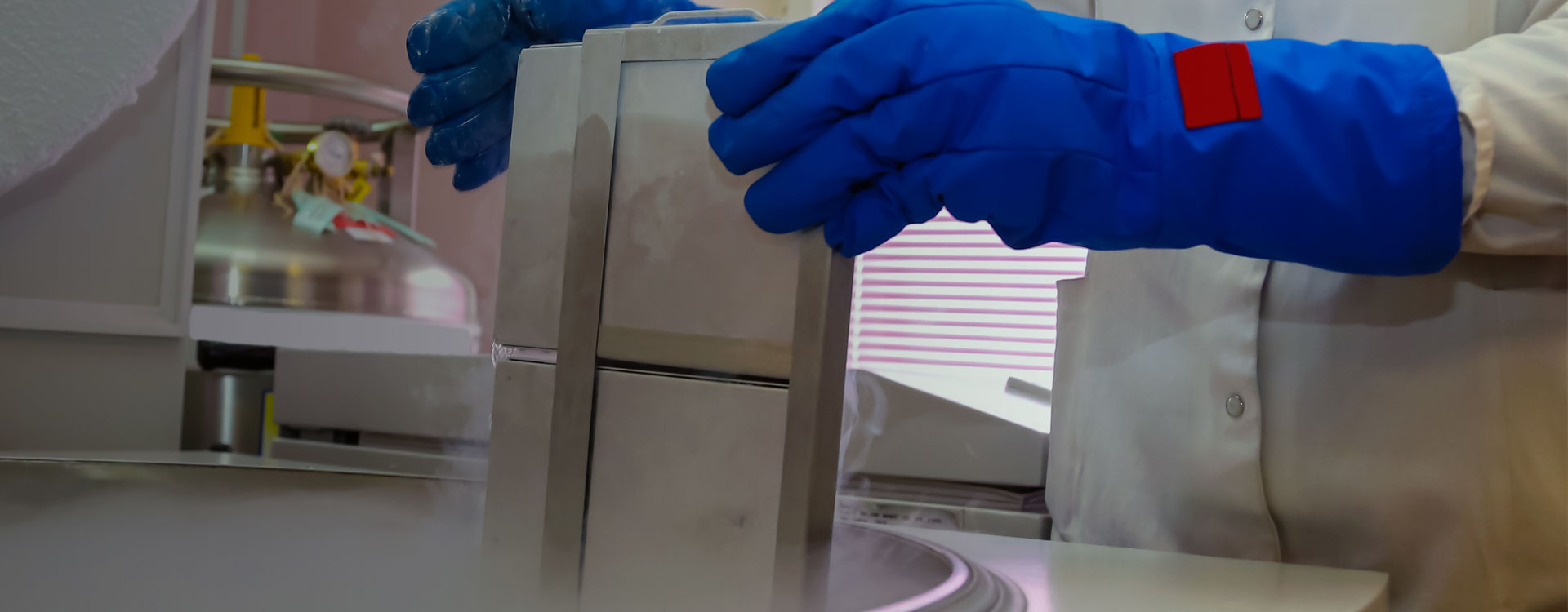Since its first successful use more than three decades ago, umbilical cord blood has become an increasingly important source of stem cells for transplants for bone marrow failures, leukemia, lymphoma, sickle cell anemia, and other life-threatening diseases.
Over 40,000 cord blood transplants have been performed worldwide for a wide variety of malignant and non-malignant disorders [*].
Cord blood is one of three sources of blood-forming stem cells used in transplants. Bone marrow and peripheral blood (blood that circulates through the body) are the other two.
Determining which stem cell source is best is based on a few factors:
- The HLA match between donor and patient needed for the transplant [*].
- The availability of the stem cells.
- How quickly the cells are needed.
- The quantity of cells derived from each source, their proliferation metrics, and the volume needed for the transplant procedure.
- The age of the patient.
- The age of the donor.
- The risk of infection.
- The risk of GVHD (graft-vs-host disease).
Let’s consider the options more closely.
What Are Stem Cells?
The cells that make blood cells are called stem cells. Stem cells are the building blocks of our blood and immune systems. They are capable of self-renewal and regeneration and have the amazing ability to repair and rebuild damaged tissue within the body.
Stem cells for transplantation can be collected from blood, bone marrow, umbilical cord blood and cord tissue, and in-vitro embryos, though the latter is rarely used for ethical reasons.
Cord blood and cord tissue yield two vastly different types of stem cells that can be used to treat different diseases and conditions within the body.
Cord blood stem cells are called Hematopoietic Stem Cells (HSCs). The primary focus in research with HSCs has been on blood and immune system disorders.
Many blood cells are short-lived and need to be replenished continuously; the average human requires about one hundred billion new hematopoietic cells each day. The continued production of these cells depends directly on the presence of HSCs — the ultimate, and only, source of all these cells [*].
Cord tissue contains Mesenchymal Stem Cells (MSCs). They are the building blocks of the body’s skeletal and connective tissues. They have also shown the ability to differentiate into coronary tissue, hepatic tissue, and more. Researchers have focused their efforts on connective tissue disorders and regenerative medicine with MSCs, but they may serve a critical role in stem cell transplants as well.
What Are Bone Marrow Transplants?
Bone marrow is the spongy tissue found inside our bones. A bone marrow transplant involves taking stem cells normally found in bone marrow, filtering those cells, and giving them back to the donor or another patient. The goal is to transfuse healthy bone marrow cells into a person whose bone marrow cells are abnormal or damaged in order to restore normal function, regenerate a new immune system and prevent further damage from a genetic disease process.
Unlike cord blood and cord tissue, bone marrow harvesting is an invasive procedure in which the donor must be under a general anesthetic. Doctors use hollow needles to remove the bone marrow from the hip bones or sternum. The bone marrow stem cells are then filtered, treated, and either transplanted immediately into the recipient, or tested, frozen and stored for later use.
Since 1968, bone marrow transplants have been done to cure many diseases and types of cancer, as well as renew bone marrow permanently damaged from chemotherapy or radiation. Diseases treated by bone marrow transplant include leukemias, severe aplastic anemia, lymphomas, multiple myeloma, immune deficiency disorders, and in some rare circumstances, solid-tumor cancers [*].
There are several types of bone marrow transplants:
- Autologous bone marrow transplants use the donor’s own stem cells, either from bone marrow, which have been frozen for the purpose of giving back to the donor following intensive treatment like chemo or radiation.
- Allogeneic transplants come from another donor who shares the patient’s genetic type, usually a sibling but sometimes a parent, or an unrelated donor found through the national bone marrow donor registry [*].
What Are Cord Blood Transplants?
Umbilical cord blood stem cells are harvested from the blood and tissue of the umbilical cord just after a baby is born. The collection occurs after the umbilical cord has been clamped and cut, and can be performed whether the mother delivers vaginally or by C-section. The cord blood and cord tissue samples are transported to a lab where the stem cells are tested, processed, and cryogenically frozen for later use, or for immediate use.
The first successful cord blood stem cell transplant was performed in 1988 as a treatment for a 5-year-old boy with Fanconi Anemia; his newborn sister’s umbilical cord blood saved his life.
The patient receives the cord blood stem cell transplant via intravenous injection, usually in tandem with drugs that encourage the cells to engraft, proliferate and renew. Researchers continue to test what drugs and treatment protocols best support these goals based on the disease and age of the patient.
A 2020 cord blood transplant trial — the largest of its kind to date — standardized a transplant protocol for 44 children born with various non-cancerous genetic disorders including sickle cell anemia, thalassemia, Hunter syndrome, Krabbe disease, metachromatic leukodystrophy (MLD) and an array of immune deficiencies.
To help the donor stem cells take root and to mitigate the potential for rejection, the children first received a low dose of chemotherapy and immunosuppressant drugs in careful sequence. Once the stem cells integrated, the drugs were tapered off. A small portion of the cord blood was reserved to give to the patients a few weeks after the initial infusion to stimulate the immune system.
Among those children with MLD, a metabolic disease that is typically fatal within a few years of onset, this protocol far exceeded the three-year survival rate of 60% [*]. At three years, 90% of the children were still alive. This protocol also had a profound effect on the 30 children with metabolic disorders in the study, effectively halting the neurological decline associated with leukodystrophy and in some cases, helping restore function [*].
For these 44 children with inherited disorders of metabolism, immunity, or hematopoiesis, the overall survival rate was 95% at one year and 85% at 5 years [*].
While HSCs are most often captured from cord blood, cord blood is also a promising source of non-hematopoietic stem cells. Among others, it contains endothelial cells, MSCs, and unrestricted somatic stem cells [*].
What Are Peripheral Blood Transplants?
In peripheral blood stem cell transplants, stem cells are collected via apheresis, a process where blood is removed from the patient via an IV catheter, the stem cells are coaxed out by a machine and the remainder of the blood is returned to the patient. The process takes 3-4 hours a day for 2-5 days. Peripheral blood stem cells are most often used for autologous transplants where patients receive their own stem cells [*].
Cord Blood vs. Bone Marrow: Which Is Better?
Cord blood offers several advantages over bone marrow or peripheral blood for stem cell transplants: it is less likely to carry infection or lead to GVHD, has better regenerative properties, requires less restrictive tissue matching between donor and patient, and offers more timely availability.
More than 80 diseases have FDA-approved cord blood stem cell transplant treatments [*][*].
Here are the key criteria in comparing cord blood and bone marrow for stem cell transplants:
Availability & Timing
Cord blood banking was first established in 1993, and now about 5 million cord blood units are banked worldwide. About 800,000 of these are in public banks, and over 4 million cord blood units are stored in private or family banks [*].
Cord blood stem cells can be accessed more quickly than stem cells from an adult bone marrow donor who may have registered years ago. Even when a bone marrow donor match is located, the donor must be found and re-tested.
Cord blood banking has led to faster procurement of unrelated donor cord blood stem cells, significantly reducing the average search time from 3 to 4 months for bone marrow and peripheral blood stem cells to as early as 1-2 weeks for cord blood stem cells [*].
Where timing and flexibility are particularly critical, as with high-risk malignancies and rapidly progressive inherited metabolic disorders, cord blood is the preferred HSC source [*].
GVHD Risk
In general, cord blood transplants (even mismatched ones) carry a lesser risk of developing GVHD than bone marrow transplants. For instance, children who have transplants using cord blood matched from a sibling have a less than 10% chance of developing GVHD, much less than when using bone marrow from the same donor [*].
Peripheral-blood stem cells are easier to harvest than bone marrow, and may demonstrate better engraftment than those from bone marrow, but also show higher rates of acute and chronic GVHD [*].
HLA Matching & Infection Risk
Cord blood stem cells allow for more leniency in HLA matching than that of bone marrow, and that means it will be easier to find a donor if a family member is not a viable donor. Cord blood transplants often require 3 or 4 out of 6 HLA markers, while bone marrow transplants require 6 out of 6 [*].
Stem cells from cord blood rarely carry any infectious diseases and are half as likely to be rejected as adult stem cells. Cord blood cells are immunologically naïve because they have not been exposed to infections. This makes them more tolerant of a tissue mismatch between the donor’s cord cells and the patient. That is why they can be used for transplant in patients who do not have a fully matched available donor [*].
Volume of Stem Cells
Umbilical cord blood is unique in that it has far greater regenerative properties than bone marrow stem cells.
According to Mayo Clinic, even though cord blood has fewer stem cells available than bone marrow, the stem cells in cord blood can grow more blood cells than those collected from bone marrow [*].
Cord tissue — especially when collected from the Wharton’s jelly of the umbilical cord — has the greatest number of MSCs of any source [*].
Sources of MSCs include bone marrow, adipose or dental tissues, cord blood or Wharton’s jelly, and even menstrual blood [*].
For many years, cord blood has been used for HSC transplants only. But researchers are also finding that umbilical cord MSCs may be used to enhance engraftment and prevent or treat GVHD [*].
The volume of stem cells can be an issue when the recipient is an adult, and the transplant requires more stem cells. Sometimes more than one cord blood unit is used or a combination of cord blood and bone marrow.
Graft Rejection
Cord blood offers many advantages over bone marrow or peripheral blood for transplants. One distinct advantage is that there is a much lower rate of GVHD associated with cord blood verses bone marrow or peripheral blood for transplants [*].
Cord Blood Banking: Public or Private?
Private cord blood and tissue banking is the best way to ensure you have matching stem cells when your child, a sibling, or other family member needs them. While there are public cord blood donor banks, it may take some time to find a match, and people of mixed race and ethnic minorities are underrepresented.
Public cord blood banks have the option to discard your donated sample. In fact, 80% of all publicly donated cord blood samples are not stored for future transplantation.
You might think that every hospital would offer parents the ability to donate life-saving cord blood and tissue if they don’t elect to bank it themselves, but that is not the case.
Further, how the stem cells are processed and stored matters. Processing cord blood quickly after collection (within 12 hours) has been demonstrated to yield significantly greater numbers of viable stem cells, and colony-forming units that grow into life-saving tissue. MiracleCord’s TimeCritical® processing plus our lab's AXP II systems yield greater numbers of viable stem cells from the umbilical cord blood.
This is just one reason MiracleCord was awarded Best Cord Blood Bank by Global Health & Pharma for 2021 and 2022. Discover the MiracleCord Advantage, and for more information, request our Free Info Kit.
The Bottom Line
Cord blood and cord tissue is a precious, life-saving resource for stem cells. Researchers continue to find new ways to enhance their renewal and regenerative properties to cure disease.
For stem cell transplants, cord blood holds many advantages over bone marrow and other sources and will almost certainly be the best source when timing is critical.
DISCLAIMER: THE INFORMATION ON THIS WEBSITE IS NOT INTENDED TO BE USED AS MEDICAL ADVICE.The materials and information contained on the MiracleCord website is provided for educational and informational purposes only, and is not intended to, and does not constitute, medical or other health advice or diagnosis, and should not be used as such. You should not use this information to diagnose or treat a health problem or disease. If you are seeking personal medical advice, you should consult with a licensed physician. Always consult with a qualified health care provider regarding a medical condition.




